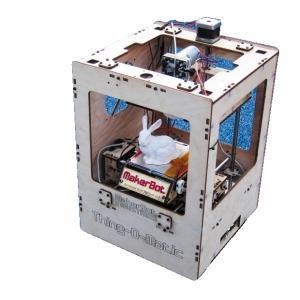 3D printing is a kind of rapid prototyping technology. It is a technology based on digital model files, using powdery metal or plastic and other adhesive materials to build objects by layer-by-layer printing. 3D printing is usually implemented using digital technology material printers. It is currently used in jewelry, footwear, industrial design, construction, engineering and construction (AEC), automotive, aerospace, dental and medical industries, education, geographic information systems, civil engineering, and other fields.
3D printing is a kind of rapid prototyping technology. It is a technology based on digital model files, using powdery metal or plastic and other adhesive materials to build objects by layer-by-layer printing. 3D printing is usually implemented using digital technology material printers. It is currently used in jewelry, footwear, industrial design, construction, engineering and construction (AEC), automotive, aerospace, dental and medical industries, education, geographic information systems, civil engineering, and other fields. 3D printers can quickly turn ideas into reality without the need for a mold, but print directly. Some spare parts modules can be manufactured in as few as 24 hours, greatly accelerating the development cycle. Some of the parts are small and it is difficult to find the spare parts of the processing factory. It can also be realized by means of a 3D printer. This is also why many institutes and companies are investing in 3D printers.
However, this does not mean that 3D printers will replace the instrument manufacturing model, which is difficult to achieve at least for the present and in the short term. At present, the cost of 3D printing is very high. Whether it is the cost of the printer itself or raw materials, it has a high cost and therefore cannot be used for mass production.
At present, a number of instrument manufacturers simply use 3D printers for instrument development and prototype production, or simply do not use 3D printing technology. Many manufacturers are paying attention to the technology and are in the early stage of understanding and research. This is mainly related to the maturity of technology and cost issues. The potential of 3D printing technology can not be ignored, but at this stage it is still difficult to popularize applications and mass production.
PEG-150 Distearate is a polyethylene glycol (PEG) ester of stearic acid. It is a white to off-white waxy solid that is used as an emulsifier, thickener, and opacifier in various cosmetic and personal care products, such as lotions, creams, shampoos, and conditioners. It helps to stabilize emulsions and prevent separation of oil and water-based ingredients. It also imparts a creamy and smooth texture to formulations and enhances the spreadability of products on the skin or hair. PEG-150 Distearate is considered safe for use in cosmetics and personal care products, but may cause skin irritation or allergic reactions in some individuals.
PEG-150 Distearate is a polyethylene glycol derivative of stearic acid. It is commonly used in the cosmetic and personal care industry as an emulsifier, thickener, and surfactant. It helps to create stable emulsions and improve the texture and viscosity of products such as creams, lotions, and shampoos. It is also used in some industrial applications such as lubricants and plastics. PEG-150 Distearate is generally considered safe for use in cosmetics and personal care products, although some people may be sensitive to it
PEG-150 Distearate Cas No.: 9005-08-7, Polyethylene Glycol PEG-150, Poly Ethylene Glycol/PEG-150
Sichuan Jinhe Qihang Co,. Ltd. , https://www.jinhechemicals.com
